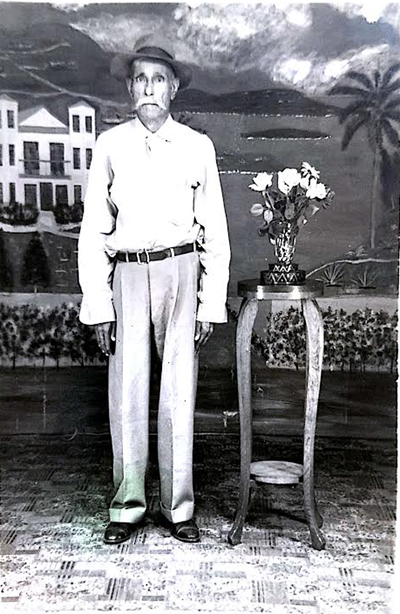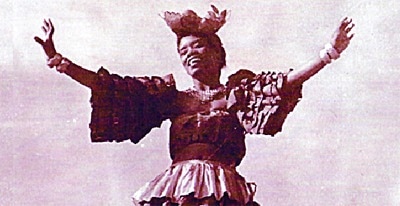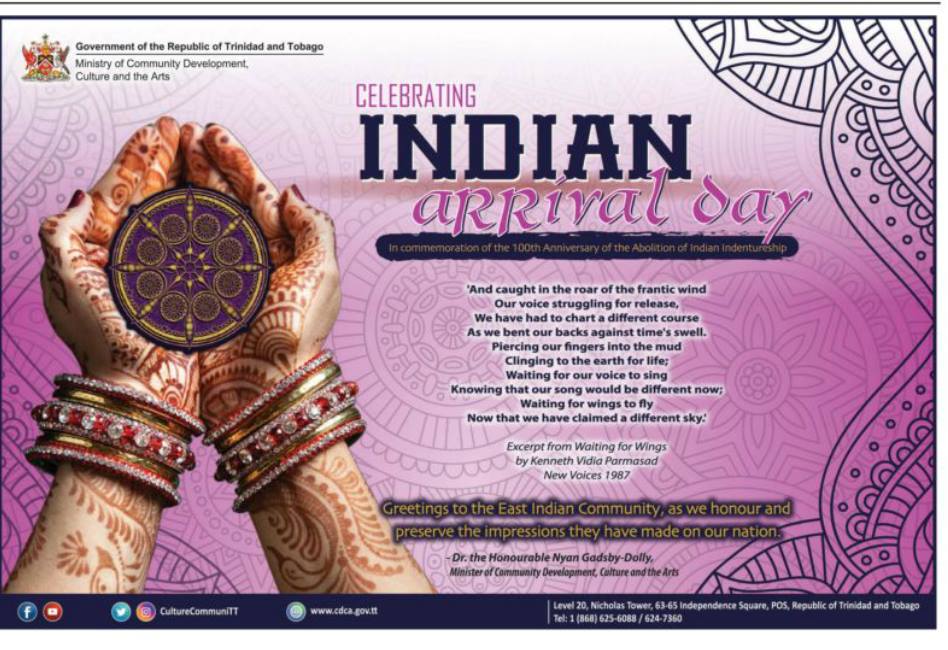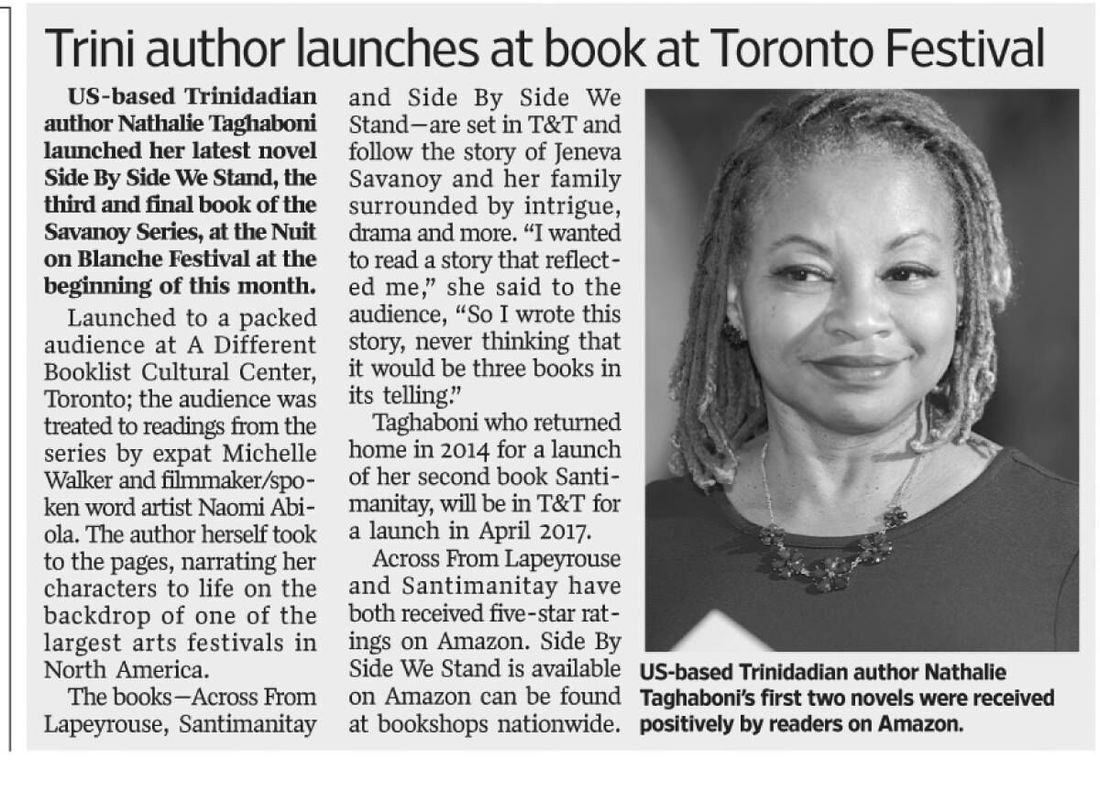 I am pleased to bring you once again, a wonderful piece by the late Angelo Bissessarsingh. Oil painting of an East Indian woman by Rudolph Bissessarsingh. Rape, mutilation, sexploitation of women of African descent were skeletons in the closet of civilised European historians of the day. So too was the new horror of East Indian women who were either kidnapped, enslaved, lured and duped into taking the arduous voyage to the West Indies. Between 1845-1917—143, 939 East Indian immigrants were shuttled to Trinidad. In the case of women, the villages that they were either recruited from or captured were hidden or altered on the documents. In the first phase, some came from the Chota Nagpur of Bengal, some from the ghettos of Calcutta and Madras. By 1870 the major recruiting areas were Orissa, the Punjab, Bihar and Oudh. The ratio of women to men very rarely rose above 40:100 and the perception of the recruiters in the beginning was that women were not as valuable to the estate labour force as men, especially when they had children. Older women rarely stood a chance of being recruited and it is documented that black hair dye was used by the recruiters to make them more valuable. Many women especially of dark-skinned complexions were also viewed as promiscuous and prostitutes. On board the ship, the caste system separated them from each other as many women of a high caste were also recruited, forced to accept the promise of a better life because of famine in some parts of India. Some were forced into what is described as depot marriages to make them more valuable. Muslims were kept separate from Hindus on the voyage. Many female recruits found themselves on ships they had not opted for or certain destinations. It was not until the early turn of the 20th century that female doctors were hired to examine the East Indian women. Prior to this, these devout Hindus and Muslims suffered the indignation of being ‘medically’ examined by questionable male figures. The women were given a sari, two flannel jackets, a woollen petticoat, a pair of stockings and a pair of shoes. Usually these were so deteriorated as to render them unwearable. Each immigrant also had a ‘tin’ or identification disk hung around his or her neck. Rape, suicide, beatings, forced prostitution, marriages and in some extreme cases, murder were all a blot on the new disguised slavery known as indentureship. Many actually jumped overboard to their deaths before reaching their destinations. The rations given to them were as meagre as the clothes on the voyage. They had to huddle together even when they had to use the toilet for fear of rape, sometimes gang rape. It is recorded that some just walked away from their depot husbands upon reaching Trinidad. This was the darkness of the voyage from India to Trinidad and the untold shame and scars that these women had to bear. It was human trafficking at its worst and definitely not a cause for celebration. What we should celebrate is the tenacity, courage, toil and contribution of those who endured the kala pani in creating our present landscape. This year, 2017, marks the 100 years celebration of the abolition of East Indian indentureship. It is through the research of Prof Bridget Brereton, Prof Brinsley Samaroo, Prof VA Shepherd that we learn of the atrocities of that cleverly disguised system of slavery known as indentureship. Angelo had noted that even the faded photos of East Indians were always doctored to depict them in a dehumanised and denigrated form, little more than animals so that the British Capitalist system could be validated in their cruelty to the East Indian immigrant. It was the rejection starting with the Sepoy Mutiny of the Indian people on the continent and their expressed dissatisfaction that brought an end to this blot on our history. —Rudolph Bissessarsingh
0 Comments
To mark 100 years celebration of the abolition of East Indian indentureship, I am pleased to bring you another story about our history courtesy of the Daily Express. The great house at Sangre Chiquito, belonging to the Dial family. Photo: Dexter Philip Bishnu Dial holds a photograph of his deceased father Prem Dial, who helped build the great house. PHoto: Dexter Philip  THOSE priceless photos taken of the Indian indentured labourers on their arrival at the human processing depot on Nelson Island show an impoverished people exhausted, dispirited and wary of their future on the mainland. But by the end of their five-year indentureship, the majority would choose to stay, accepting Crown land instead of the free trip back to the Motherland. However, it is a little known fact that not all who made the voyage from India came on contract. Some paid their passage and arrived on the island free of encumbrance, says genealogist Shamshu Deen who has researched and found the roots, in India, of many Trinidadians. Then there is the case of man named Mandary who met wife Ooozerone on the voyage to Trinidad in 1856, and returned to India 22 years later with their four children. Within two years, the family (without Mandary who had since died) returned to Trinidad on November 8, 1882 aboard the vessel, the Scottish Admiral. Among the children was Prabhu, who would take the name Prabhudial Maharaj, and make his fortune in the cocoa planted in east Trinidad, a wealthy Indian at a time when most of his race lived in barracks and shacks. The industry that was King cocoa, crashed in the 1920s, but not before Prabhudial built what would become his legacy. In 1918, the year after the end of Indian Indentureship, he began constructing the family home. He chose a gentle slope at Sangre Chiquito, with a long driveway leading to the main road heading to Manzanilla, a spot that invited the traveller to consider the elegance of the house but discourage anyone from coming too close. It took him two years to build, and he spared no expense. And when it was completed, it rivalled any of the east coast great houses (several of which still survive) which were influenced by Trinidad's British, French and Spanish heritage. Prabudial Maharaj would have two marriages and at least twelve children before his death. His first-born, Prem Dial (1898-1966), who was bequeathed the house, also had two marriages that produced seven children. The second to last child, Vishnu Dial (born 1949) now owns the home and lives there with a brother and their families. And he knows the place is something special. Dial said: “I have lived my entire life here. It was already old when I was born. My father told me that it took two years to build, and they used the very best material. The front walls (mortared and shaped to look like bricks) have thousands of river stones, and the fretwork was patterned after what my grandfather saw in India”. There was a detached kitchen at the back made of tapia walls, to prevent an accidental fire from torching the place, and concrete cistern for storing rainwater. Nearby were the coca drying and store houses, where the beans would be bagged for transport into Sangre Grange, where it would be weighed, sold and transported out of the area by rail. Those buildings are gone now and the attic can no longer be accessed, but surviving it all was the antique Ansonia Octagon clock, older even than the house, under which generations of Dials marked time. Pillars shaped into hands holding a sphere, stand at the base of the staircase. Why Prabhudial had commissioned the sculptures is lost to time, but the family would like to believe it to be a message from a man who then “had the whole world in his hands”. Remembering the early days- photo source: the Virtual Museum of T&T Angelo Bissessarsingh On May 30th 1845, the Fath Al Razak docked in the Port of Spain harbour in Trinidad and Tobago with 225 adult passengers on board. The passengers were immigrants from India who had come to the British colony to work in the sugarcane plantations after the abolition of African slavery. They had spent 103 days on sea during the arduous and dangerous journey that spanned 14,000 miles (36,000 km). The immigrants were contracted for five to ten years to work in the sugarcane estates in a system that ended in 1917.
A total of 147,596 Indians came to Trinidad over a 70-year period. Although they were promised a free return passage back home, at least 75 percent of them stayed and settled in the New World colony. In many ways, they brought India to the Caribbean. They continued with their traditions of Hinduism and Islam, and eventually transformed Trinidad into a colourful cosmopolitan society with their introduction of new styles of dress, music, songs, dance, language, cuisine and customs. http://www.trinicenter.com/tnt/2007/250507.html The history of our ancestors in honour of indian arrival day - a series presented in six parts5/31/2017  To mark the 172nd year of Indian arrival in Trinidad, I am pleased to share this story with you. It appeared in the Trinidad Guardian. In central Trinidad, covered in tangled vines, towering trees and green vegetation as far as the eye can see, one can find the evidence of a once thriving cocoa, coffee and citrus industry. The rotting boards and rusted galvanise of former barracks, which once housed plantation workers, indentured labourers and former slaves alike, are slowly deteriorating into nothingness, an erasure of a history which crafted the national identity of T&T. Driving through the road, which connects the bustling borough of Chaguanas to sleepy Tabaquite, one comes to a junction and the only landmark is a bar with few patrons. The junction is Massa Junction, and if an adventurous soul takes the road on the right, they will come upon Massa Nature Park, which stands out in an area not known for entertainment. The nature park was opened in 2014 by Johnny Hardial and many of its customers tend to stumble upon it while driving through country roads. The park features swimming pools, a pond filled with fish, a small bar area and an owner who is only too happy to share the story of its origin. In 1917, just before East Indian indentureship ended, Ishwar Hardial boarded a boat full of other labourers headed to the West Indies. His destination was to be Trinidad, a place he had never seen, but where he hoped to earn a living through the indentureship contract he had signed. In Trinidad, he ended up in the minimally populated village of Brasso where he worked on estates full of cocoa, coffee, citrus and bananas. It was there that Ishwar met his wife and fathered 14 children. It was also there that Ishwar created a legacy of kindness and generosity that he passed down to his children and which made him well known in the community. After his contract ended, like many of his jihaji, Ishwar had the option of returning to India or getting land from the government and making a life in Trinidad. Later, he would tell his children that he did not want to go home to Bihar, though he hardly ever spoke of his home. He was adamant that Trinidad was his home and began cultivating the land he had received as payment for his services. He hired workers from the Brasso community to work on his land, cultivating citrus and coffee. “He wasn’t educated because he never went to secondary school,” recalls Ishwar’s son Johnny. “He used to sit under the mango tree and though he only really knew Hindi well, in the little English he knew he would tell us stories of his life here. “He had a mule cart and he would go on the mule cart and sell rice and oil. He had shops and he used to help a lot of people. Anybody had a wedding, they used to help and his jahajis who came on the boat with him, if they were sick he would help them, if they had no food he would help them and then his generosity spread to all the village.” Johnny remembers his father’s generosity to his neighbours. “There was nothing like Indian or African, if someone was building a house, everybody would build the house, and all the ladies would come and cook. “Whether it is East Indian, African or what, we would go into each other’s houses. It still happens in the country but it doesn’t happen in the town.” His father, who was nicknamed Massa because he employed many of the villagers, taught his children through example that it was important to give to those who needed. “In those days, if we go to school and somebody came without food, my father would encourage us to share food with the other children. “People don’t give now. Nobody starved in those days, everybody was giving. Now you can be next door and your neighbour starving and you wouldn’t know or care.” Johnny, who migrated when he was 19, came back to Trinidad four years ago and was horrified at the state of the former estates. “My father came here and worked hard and built something and my parents died and there was nothing to show this was where he used to live or this is what he left behind. “I sat down and thought about how he educated me, gave me all of this and I had nothing to commemorate his impact on the community, not even a bench.” The senior Hardial, Ishwar, died one year before Independence in 1961 after coming to Trinidad on a boat, moving out from the barracks where he lived, purchasing five acres of land and then buying more. “When I came back to Trinidad, the land was overgrown in bush and bamboo. It used to be cocoa, coffee, citrus bananas. It was a prospering estate. The trees were getting old. The idea of the nature park was to build this in their memory and to share a little about him with the people who come here.” For Johnny, his father arrived an Indian but died a Trinidadian who loved this country and what he had accomplished here. Source: Trinidad Guardian Anjani Ganase, 30, is a coral reef champion from the Caribbean. She grew up in Trinidad’s Santa Cruz Valley, where her nature-loving parents inspired a love for the natural world in her. As an island girl, she chose to dedicate her life to the sea. Click on the link here to read an interesting interview with this young lady.
Award-winning T&T film The Cutlass heads to Cannes - watch for its release in canada after aug. 2nd.5/28/2017  The Cutlass played to sold out audiences at the T&T Film Festival last September, taking home the People’s Choice Award and Best Trinidad & Tobago Feature Film. Now, it is headed to the Marché du Film at the Cannes Film Festival in France in May, a rarity for Trinidadian cinema. Inspired by true events, The Cutlass is a dramatic thriller set in the tropical wilderness of Trinidad, and tells the story of a young woman who falls into the grasp of a dangerous sociopath. Taken from her friends at gunpoint and dragged deep into the island rainforest, she must quickly learn to navigate this unforgiving landscape and the tangled mind of her abductor. The film was directed by Darisha J Beresford, written by Teneille Newallo and stars German-born, Tobago-raised Lisa-bel Hirschmann, Trinidadian Arnold Goindhan and Hollywood actor Kirk Baltz. A release said the film is one of three chosen by Film TT to receive both a grant and investment from the T&T government. Newly signed to Leomark Studios - a Los Angeles-based production and distribution company with more than 200 titles in release worldwide - The Cutlass will be making its international market premiere as part of Leomark’s new market line-up. The agency hopes to sell it to multiple territories around the globe, and has a track record of doing so. The film has also signed to Wild Eye Releasing, a distribution company that bought its North American rights, with the exception of its theatrical release. The producers of The Cutlass—Darisha J Beresford, Teneille Newallo and Drew Umland—have held onto the rights to all Caribbean distribution and to theatrical distribution in North America (which includes the US and Canada) and will self-distribute throughout these territories. The film connected with both Wild Eye and Leomark through Ben Yennie at Guerrilla Rep Media, who has been been advising on all aspects of distribution. Self-distribution on such a massive scale seems a first for any T&T film and the producers hope it might break new ground as a distribution model for the English-speaking Caribbean and its diaspora. The Cutlass will be at Cannes from May 17 to 26, and is scheduled for a Caribbean theatrical release this August. The T&T theatrical release is scheduled for August 2 and will subsequently be released in the Caribbean, US and Canada. I am pleased to post this article about a Trini author, Nathalie Taghaboni, Author of Tales from Icebox Land and The Savanoy Series (Across From Lapeyrouse, Santimanitay, Side By Side We Stand). Nathalie has been writing for many years and in 2001 was a columnist for the SHARE Caribbean newspaper in Toronto. Her popular and much quoted columns ran for over ten years. She enjoys writing in the vernacular; she
says that for her, it is one of the best ways to write expressively. She has also written for the Chicken Soup series and was a featured writer for SHE Caribbean Magazine Everybody’s Magazine and continues to write for several online and paper publications. She has recently returned from successful book launchings in Trinidad and Toronto. To read more about the author and her books, click here  We join the local creative community in mourning the loss of dancer and dance pioneer Julia Edwards. The First Lady of Limbo, Julia Edwards will be remembered for her role in popularizing this indigenous funerary folk dance. Edwards, who first started dancing in 1947 with Boscoe Holder's Dance Company, formed her own dance troupe in 1953 and began performing at venues across Trinidad. It was while they were performing at the Miramar Club in Port of Spain that they were recruited to perform in the film Fire Down below starring Robert Mitchum and Rita Hayworth. Edwards performed the limbo from Africa to the US to Japan and India, introducing the flaming bar in 1959. She also toured extensively with calypso king the Mighty Sparrow. We celebrate her legacy. We remember her contribution to our indigenous dance forms and extend condolences to her family, friends and colleagues. |
T&T news blogThe intent of this blog is to bring some news from home and other fun items. If you enjoy what you read, please leave us a comment.. Archives
May 2025
Categories
All
|









 RSS Feed
RSS Feed